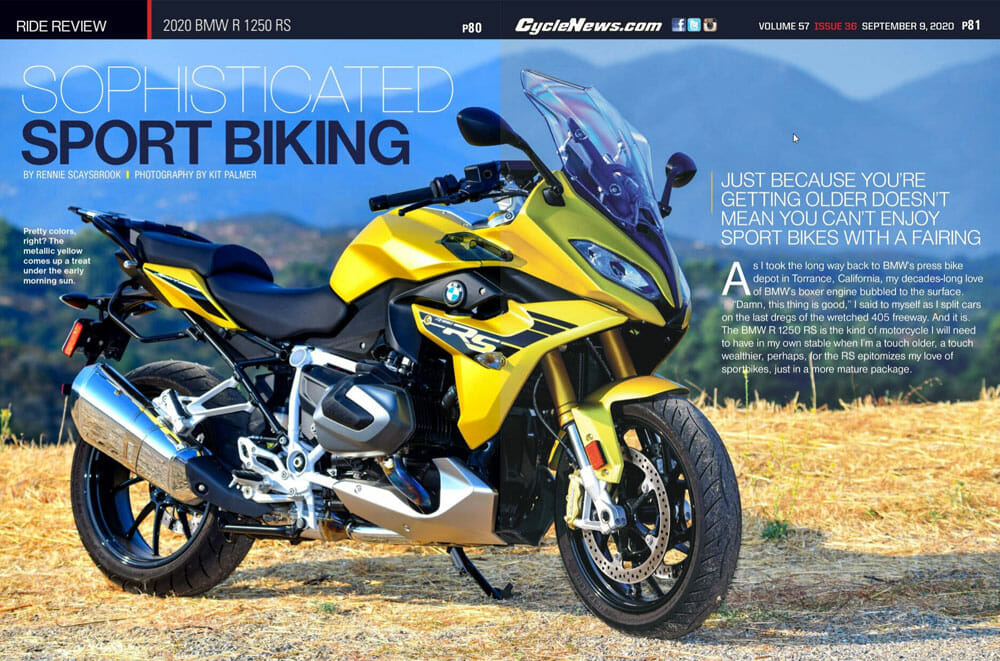Rennie Scaysbrook | September 13, 2020
Just because you’re getting older doesn’t mean you can’t enjoy sportbikes with fairing.
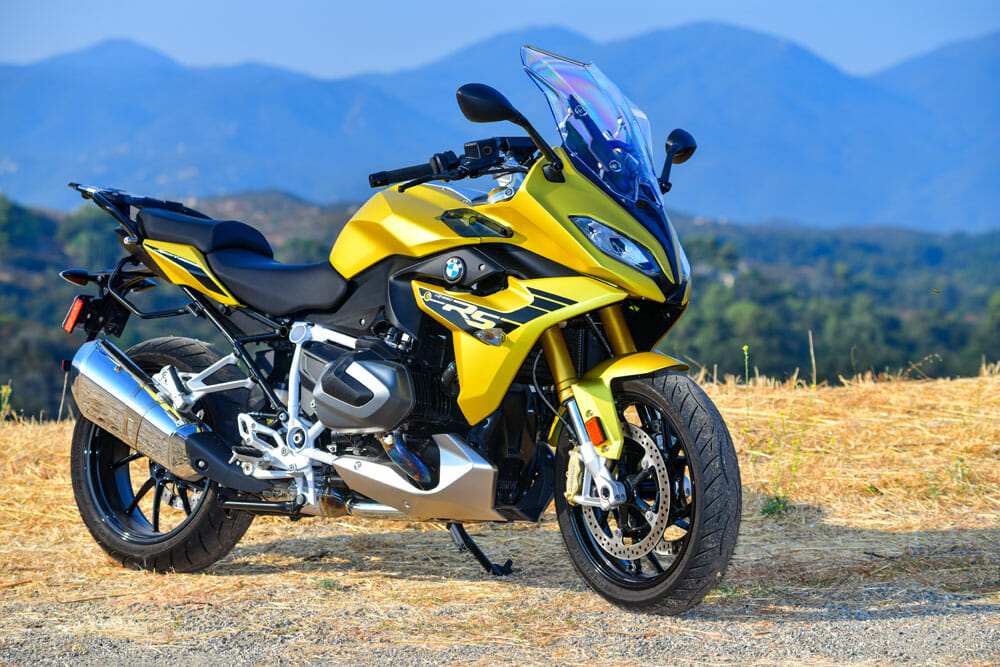 Pretty colors, right? The metallic yellow comes up a treat under the early morning sun.
Pretty colors, right? The metallic yellow comes up a treat under the early morning sun.
Photography by Kit Palmer
As I took the long way back to BMW’s press bike depot in Torrance, California, my decades-long love of BMW’s boxer engine bubbled to the surface.
“Damn, this thing is good,” I said to myself as I split cars on the last dregs of the wretched 405 freeway. And it is. The BMW R 1250 RS is the kind of motorcycle I will need to have in my own stable when I’m a touch older, a touch wealthier, perhaps, for the RS epitomizes my love of sportbikes, just in a more mature package.
This is the motorcycle equivalent of Larry Bird—a gangster in his day, but willing to kick back and enjoy the fruits of his labor.
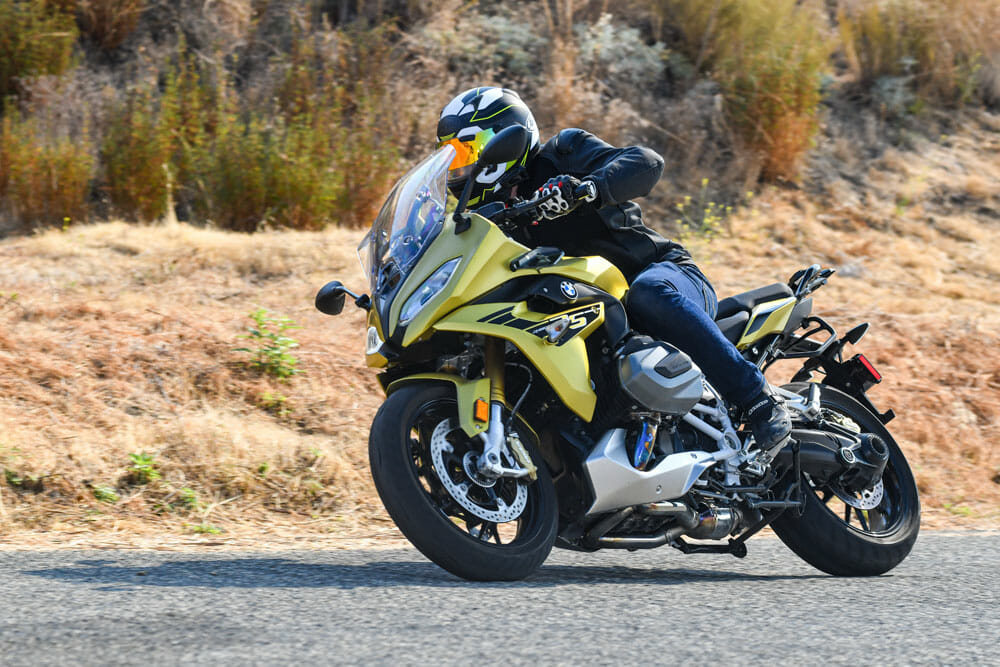 You’re sitting pretty low to the ground in the chassis, which is lovely for corner stability.
You’re sitting pretty low to the ground in the chassis, which is lovely for corner stability.
BMW’s boxer motor has been the basis of the Motorrad wing’s success for generations, and it’s been refined further in the RS. Fitted across three models in the RS, R and GS Adventure, this iteration of the motor is fitted with the BMW ShiftCam system that debuted back in 2018.
The ShiftCam feature is BMW’s take on variable valve timing. Using a shift gate on the end of the camshaft, the intake valves are opened at different times in the combustion cycle when on partial throttle at lower revs, giving less valve lift but better control of the combustion.
When things are ramped up to full throttle, the shift gate moves the cam onto a different lobe that allows for the full lift and duration of the valves to be reached, thus pumping in more air, more fuel, and producing more power.
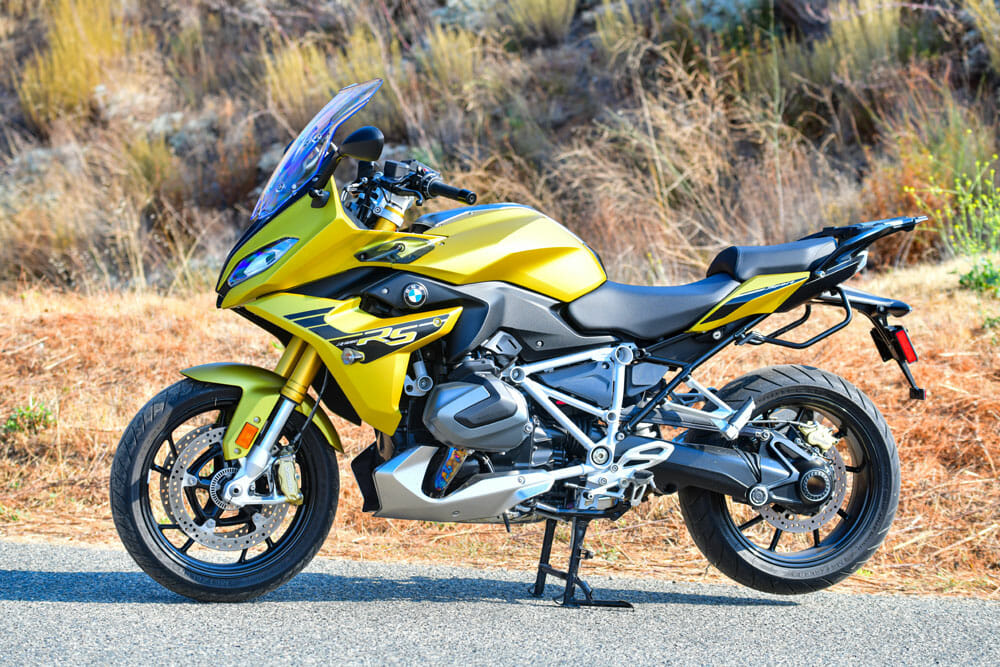 You can cover many, many miles with a neutral ride position such as this.
You can cover many, many miles with a neutral ride position such as this.
ShiftCam has come in for a bit of criticism in the past. I found the system, when paired with the restrictions in place for the noise and emissions regulations, to be a bit unwieldy on the S 1000 RR superbike. The cam shift from partial throttle on low revs to full power and high revs wasn’t smooth on the U.S.-spec models, especially as when ShiftCam switches modes, the computer’s emissions modes would also change. This dumped a heap of power on the rear tire right as you needed stability, making the chassis leap about under power.
I knew it was a U.S.-spec problem, however, because I’d ridden a Euro-spec bike in Spain and didn’t experience the same issue.
However, this plight that affected the S 1000 RR doesn’t rear its head to quite the degree on the RS. As the power doesn’t come through with the same urgency as the superbike’s, it’s much more manageable.
Also, the trade-off is excellent low-end fueling and throttle response on the RS, which works great for riding around town. Cruise between 3000-6000 rpm and the throttle response is velvety smooth, and it’s matched to one of the best gearshifts in the game, once you get past first gear.
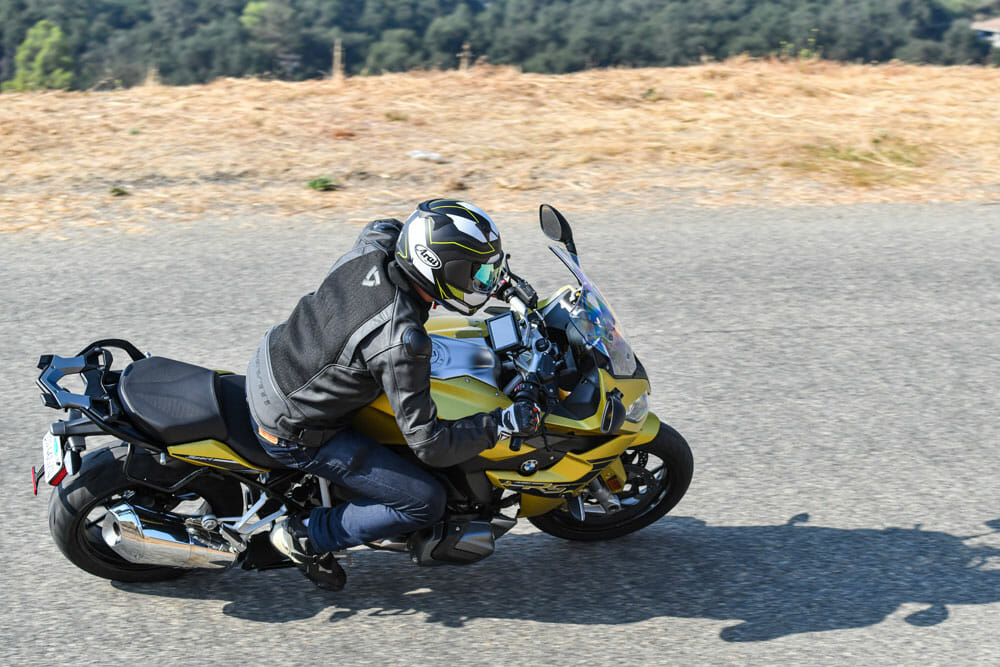 Just a slight hunch forward in the cockpit angles the rider into the wind nicely.
Just a slight hunch forward in the cockpit angles the rider into the wind nicely.
Like pretty much all the boxer motors in the past equipped with a quickshifter, getting out of first gear isn’t the most pleasant experience. It’s a proper “clunk” but from then on, it’s smooth shifting, baby. The same can be said for the down shift, as the Gear Shift Assist Pro feature works like a dream, matching revs ideally for the corner entry coming up.
The RS comes with two riding modes as standard, along with Automatic Stability Control (BMW speak for basic traction control), and Hill Start Control as standard. However, up your package (as BMW expects most of its customers to do) to Riding Modes Pro and you’ll get three more riding modes that allow you to further vary power delivery, Dynamic Traction Control (DTC), ABS Pro, Hill Start Control Pro and Dynamic Brake Assistant (DBC).
The Dynamic Brake Assistant is interesting in this, another of BMW’s attempts to save you from yourself. Occasionally when we pull in the front brake lever to activate those Brembo four-piston calipers, the rider’s right hand can roll the throttle back slightly, adding a touch of acceleration to the braking phase—which is far from ideal. BMW’s solution is to reduce the motor’s torque delivery and add a little rear brake, so that when the front brake lever is applied and you accidentally roll back on the throttle, you get braking and all available engine brake—and not any unwanted acceleration.
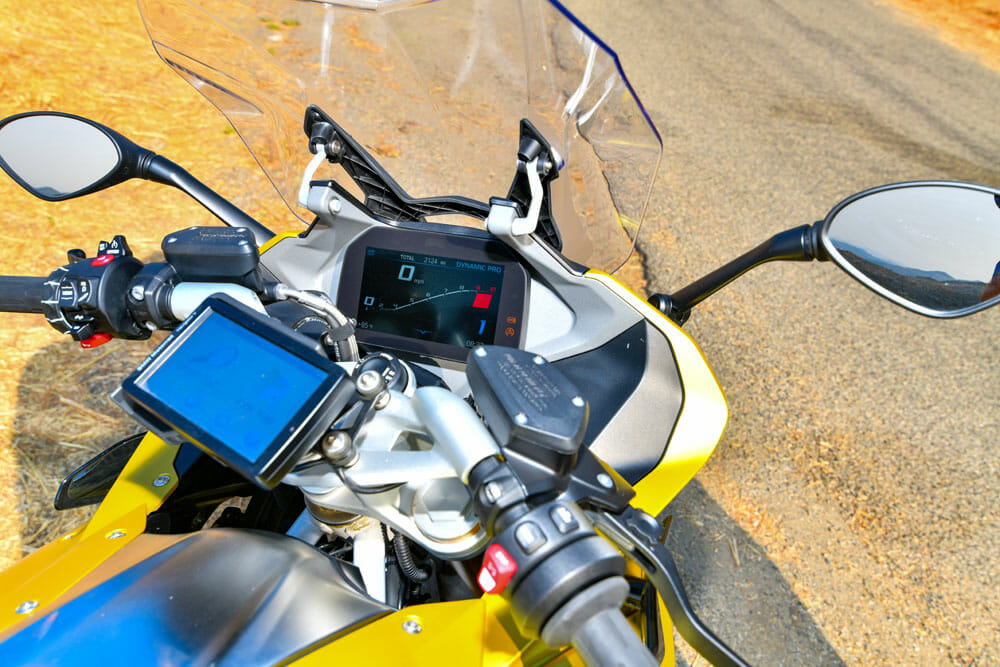 Mission control is a little overwhelming as there are just so many things to adjust if you desire.
Mission control is a little overwhelming as there are just so many things to adjust if you desire.
I’ll be honest and say I didn’t feel the system working, but it’s nice to know it’s there. It’s especially helpful for when you get tired and lazy, which many of us do on long rides.
There are several other pricey packages you can add onto the purchase of your RS, those which include heated grips, cruise control, navigation, etc., all of which our test bike had. And all ones—once you’ve experienced them—are pretty hard to live without, especially on a touring bike.
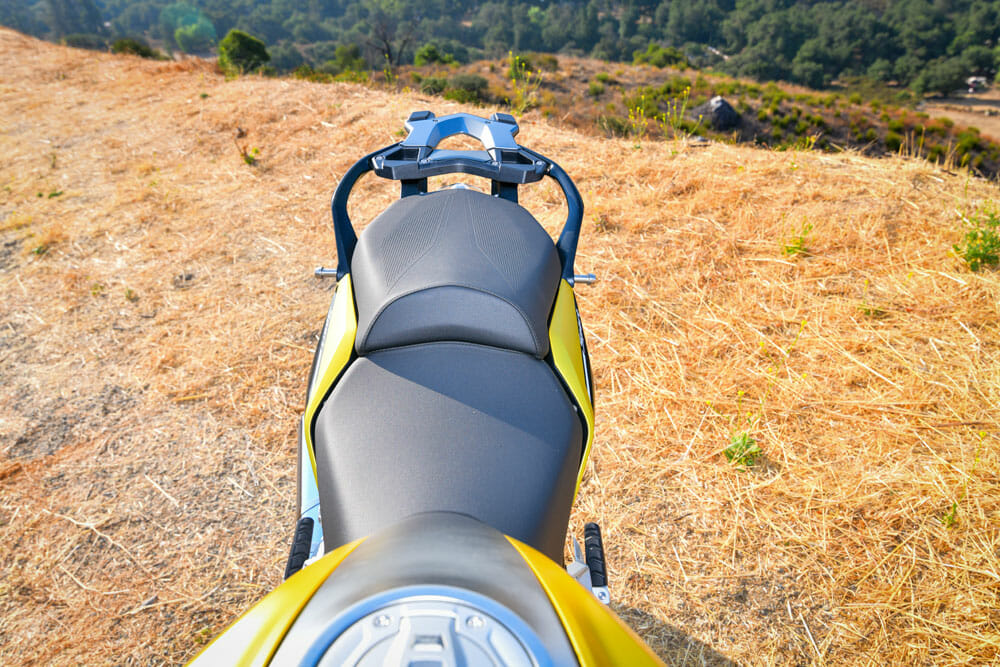 That seat is superbly comfortable.
That seat is superbly comfortable.
Our test bike was fitted with the Dynamic ESA (electronic suspension adjustment), which allows for Dynamic and Road modes. Dynamic was, for my money, too hard, a bit like how I felt when I tested the S 1000 XR a few months ago. Road mode on the Dynamic ESA allowed for a much more comfortable experience, and considering the almost sedate nature of the RS, I ended up leaving it there regardless of the riding I was doing.
From the hot seat, the ride position is absolutely spot on for someone my height of 6’1”. And, hallelujah, the screen angle is actually one I can live with. I wanted to throw the XR’s screens off a cliff, but the adjustable screen on the RS points the wind at the right angle so it goes over my head, not straight into it. I can’t tell you how refreshing that was, as I’ve grown to absolutely hate almost every screen I’ve tried on touring bikes over the past few years. Good job, BMW.
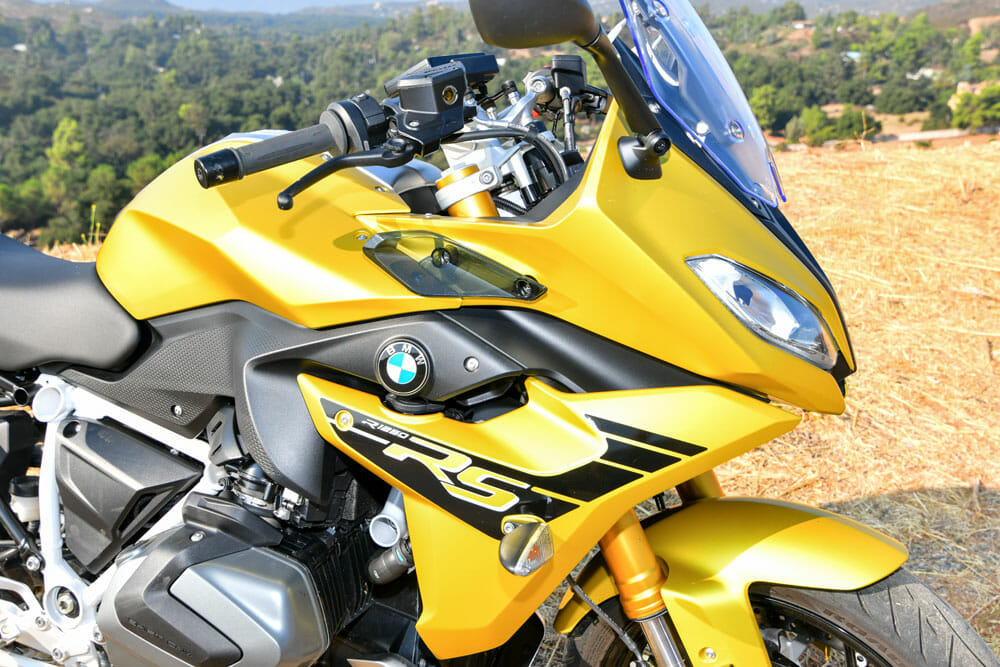 It’s definitely edgy, but all those body parts play a funny little optical trick in that they somehow make the bike look smaller in the metal.
It’s definitely edgy, but all those body parts play a funny little optical trick in that they somehow make the bike look smaller in the metal.
For a bike with such a massive motor (dimensionally), it’s amazing how well the RS handles. That motor sticks out like a boat anchor but the fact it’s so low in the chassis makes for lovely, light handling, such that it belies the size of machine.
As does the bodywork, ours wrapped in that stunning metallic yellow paint scheme. You’ve got a big bike underneath you, but the way BMW has angled and cut the bodywork front to back not only helps deflect the oncoming wind, it visually reduces its size—even if in reality that’s an illusion.
At the end of my two weeks with the RS, I was sitting in my garage admiring the view when a peculiar question came over me. Given the choice, would I take this RS or the BMW S 1000 XR? Both are essentially for the same rider, both offer sporting rides that can double as tourers, and both have been recently revamped.
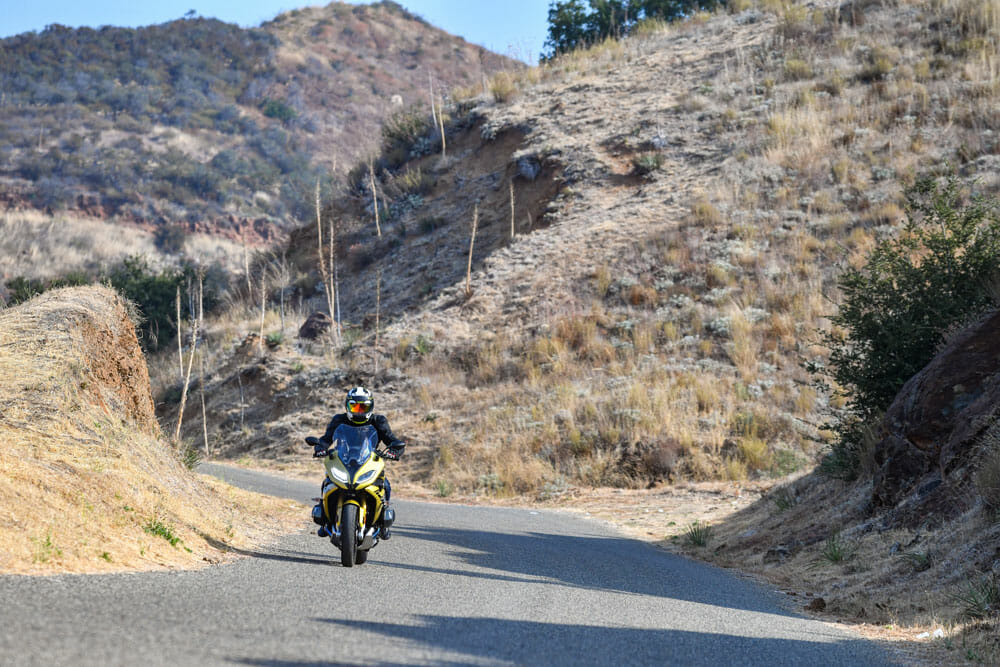 I’m going riding. Don’t call.
I’m going riding. Don’t call.
In the end, I’d have to go the XR (with a shorter screen, of course), simply as it offers a little more legroom than the RS, and I just love that four-cylinder motor. However, I still absolutely love that RS. The new boxer motor is superb, as is the fit and finish, the gold color and the options available. It’s likely the bike I’d go for over the XR when I’m in my 40s, and if this is you, we may have found your next sportbike, I mean, sport tourer.CN
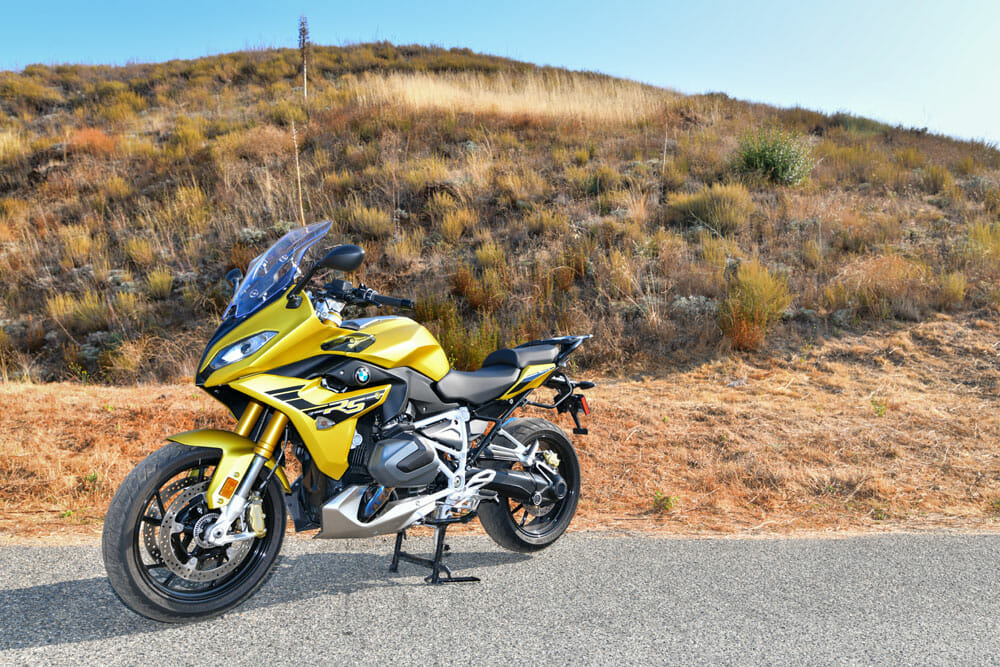
2020 BMW R 1250 RS Specifications
|
|
| MSRP: |
$15,695 |
| Engine: |
Boxer twin-cylinder, 8-valves, DOHC |
| Fueling: |
EFI |
| Displacement: |
1254cc |
| Bore x stroke: |
102.5 x 76mm |
| Power: |
136 hp at 7750 rpm (claimed) |
| Torque: |
105 lb-ft at 6250 pm (claimed) |
| Transmission: |
Six-speed |
| Clutch: |
Wet multi-disc |
| Chassis: |
Two-piece frame, engine as stressed member, tubular steel subframe |
| Front suspension: |
45mm inverted fork, electronic self-adjusting rebound/compression damping (Dynamic ESA) |
| Rear suspension: |
BMW Paralever and WAD strut with spring-preload and rebound-damping adjustable shock (Dynamic ESA) |
| Front wheel travel: |
5.5 in. |
| Rear wheel travel: |
5.5 in. |
| Front brake: |
Dual Brembo 320 mm discs, 4-piston caliper, ABS Pro |
| Rear brake: |
Single 276mm disc, 2-piston caliper, ABS Pro |
| Front tire: |
120/70 ZR17 |
| Rear tire: |
180/55 ZR17 |
| Seat height: |
32.3 in. |
| Wheelbase: |
59.6 in. |
| Rake: |
27.7° |
| Fuel capacity: |
4.8 gal. |
| Weight (curb, claimed): |
536 lbs. |
